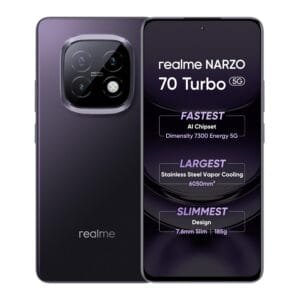Just how powerful will the Steam Machine be? Based on expert analysis of the specs revealed by Valve when it announced the Steam Machine on Wednesday, its new compact, console-like gaming PC is aimed straight at the capabilities of the current generation of home consoles: Xbox Series X and PlayStation 5. It should be able to play the same games to a similar level of fidelity. But there are compromises in its spec that suggest that Valve has been very cost-conscious when designing the machine, and is hoping to make it as affordable as possible.
Valve demonstrated the Steam Machine to a range of tech and gaming publications before its announcement. Among them was Digital Foundry, which as usual has provided an extremely thorough analysis of the new device’s capabilities, informed by hands-on experience at Valve as well as testing of parts similar to those included in the device. If you’re curious to dig deep into the tech behind Valve’s new game cube, I highly recommend you give DF’s analysis a watch or a read.
Here is the TL;DR version: The Steam Machine broadly sits with the current-gen consoles in terms of power, but its spec — particularly its graphics processing unit (GPU) — puts it a little behind PS5 and Xbox Series X. Digital Foundry says “its spec sheet suggests performance at some mid-way point between Xbox Series S and the standard PlayStation 5, perhaps skewing more closely to the Sony console.”
The AMD Zen 4 central processing unit (CPU) with its 16 GB of RAM isn’t the problem. In terms of computing brain power, the Steam Machine is more than adequate. The issue is the pixel-pushing muscle supplied by the GPU. This “semi-custom” AMD RDNA 3 unit appears to be a cut-down version of the RX 7600, a so-so mid-range graphics card from two years ago. (Moore’s Law is Dead reckons it’s “almost exactly” a 7600M, a laptop variant of that card.)
Additionally, this GPU has just 8 GB of VRAM to work with. The consoles have more; Xbox Series X allocates 10 GB of RAM to its GPU, while PS5 dynamically allocates some but not all of its 16 GB, estimated to be in the 10-12 GB range. Practically, 8 GB of VRAM presents a bottleneck in storing information for graphically rich games which can impact performance. It’s enough of a worry for DF’s Richard Leadbetter to say he’d like to see Valve introduce 16 GB of VRAM as a purchasing option for the Steam Machine.
At these specs, Valve’s claim that the Steam Machine is capable of 4K, 60 frames per second gaming seems rather misleading — even allowing for its caveat that this level of performance is enabled with FSR, AMD’s machine-learning upscaling tech. Obviously, performance depends on the game and its settings. But for contemporary AAA games, the Sony and Microsoft consoles have largely proved incapable of 4K/60 — they tend to operate at 1440p/60, or 4K/30 — so it certainly won’t be true of the slightly weaker Steam Machine. Leadbetter says he expects the Steam Machine to excel at 1080p gaming, hence the Series S comparison.
Also like the Series S, the base model of Steam Machine will come with just 512 GB of storage. (There will also be a 2 TB model.) Anyone who has used a Series S for a while will know that this isn’t really enough for modern game sizes, and requires constant deleting and redownloading of games. The fast SSD storage that the current gen consoles use is expensive, as you can tell from their price points: the 1 TB Series S is $50 more than the 512 GB model, while the 2 TB special edition Series X is $150 more than the standard machine. Sony, meanwhile, has tried to keep a lid on prices by lowering the amount of storage in its entry-level PS5 Digital Edition from 1 TB to 825 GB.
What the Steam Machine’s specs tell you is that Valve’s priority has been to keep the cost of the device down in a challenging moment when gaming hardware is getting more and more expensive. The fact that it’s offering a 512 GB option at all shows how keen it is to hit a low entry-level price point. This is reinforced in all the interviews that Valve has given, where “affordability” is a constant theme. Valve told Digital Foundry that it was balancing cost against a spec that would be an upgrade for the majority of Steam users, according to its hardware surveys.
The Steam Machine will probably compare favorably on price, spec, and definitely design with entry-level gaming PCs. Whether it can do the same with the consoles is the million-dollar question. Valve isn’t necessarily a big enough manufacturer to take advantage of the kind of economies of scale that Microsoft and Sony have access to. We’ll analyze the likely price of the Steam Machine in a separate piece, but what we can tell for now is that Valve is working hard, and cutting a few corners, to be able to compete with the consoles.




